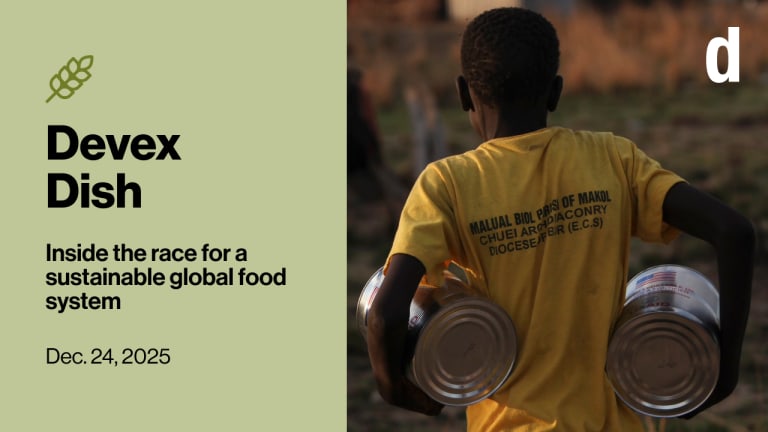
It’s been an interesting year in the development business. While changes have long been in the making, there was real evidence in 2012 that traditional development finance sources are being tested and reshaped, shifting the playing field for everyone from aid recipients to implementing partners to policymakers. As 2012 comes to a close, Devex looks back at 6 big development business themes of the year.
1. Emerging donors
In a bid to bolster their positioning in the global aid architecture, emerging economies are ramping up their aid spending and programming. As a full-fledged member of the OECD’s Development Assistance Committee, South Korea’s bilateral programs and multilateral contributions continued to scale. Drawing on their own experiences addressing development challenges, Brazil and Russia are among the new breed of donors stepping up to the plate. The once spirited talk of a BRICS (Brazil, Russia, India, China and South Africa) multilateral development bank subsided quickly, but India and South Africa appear intent on pushing through with the expansion of bilateral aid agencies modeled after the U.S. Agency for International Development.
2. Global health
Just before this year’s historic International AIDS Conference in Washington, the Joint U.N. Program on HIV/AIDS announced that HIV/AIDS funding from the international donor community had largely fallen flat between 2008 and 2011. The U.S. President’s Emergency Plan for AIDS Relief’s aggressive drive for greater efficiency, innovation and partnership may set an example for how donors can sustain HIV/AIDS programming in these tight-fisted times. With some sources estimating that the Bill & Melinda Gates Foundation would account for approximately 60 percent to 70 percent of private giving to global health in the 2010-2012 timeframe, the private foundation continued to drive the global health agenda. In 2012, we also saw private foundations such as Gates partnering with public donors, the private sector, and implementers in pursuit of more innovative, scalable, and sustainable interventions.
3. Country systems
Reliance on country systems – the concept that aid should be channeled through institutions and systems of recipient states – has been gaining traction across much of the donor community, but has also been met with some resistance. Following the most recent aid embezzlement scandal in Uganda, can country systems overcome lingering questions over aid accountability and transparency in developing countries?
4. US elections
In the run-up to this year’s U.S. presidential elections, Republican vice presidential nominee Paul Ryan’s budget plan – which would have slashed international affairs spending and transformed the Millennium Challenge Corp. into the lead U.S. aid agency - prompted spirited debate over the future of U.S. foreign aid. As Ryan returns to his leadership role in Congress, his controversial ideas for the U.S. aid program may continue to figure prominently in the second Obama term. The Obama administration gave fewer details on its own foreign aid platform, but analysts say the Obama team could be planning something significant beginning in 2013 that would define Obama’s global development legacy.
5. US aid reform
The Obama administration’s ambitious aid reform agenda, called USAID Forward, has begun to change the way the premier U.S. development agency does business. As Devex reported earlier this year, delays in awarding USAID contracts and grants appear to have worsened in recent years. Yet after the administration’s apparent about-face on the on components of the U.S. Global Health Initiative – which would have reinforced USAID Forward’s goals across the U.S. global health regime – some fear that the U.S. aid reform agenda may be losing steam.
6. Private sector engagement
From donors to implementing NGOs, a host of development actors are increasingly turning to the private sector for new sources of ideas, financing and expertise. Already, market-based and private sector-driven solutions to development challenges – including impact investing – are making their presence felt in financial and political capitals and developing countries. In recognition of these trends, this year Devex and USAID launched a new platform linking business and development professionals: Devex Impact.
Lorenzo Piccio contributed to this report.








